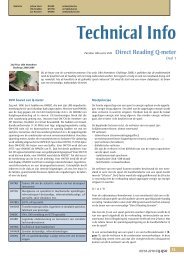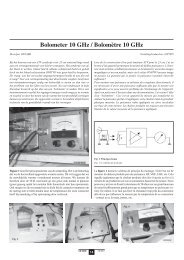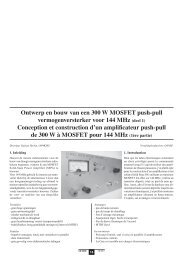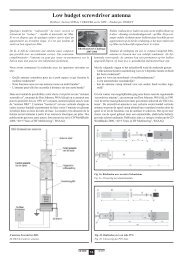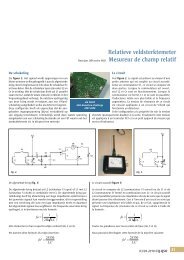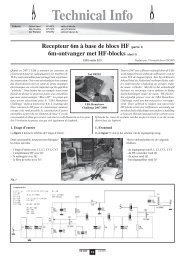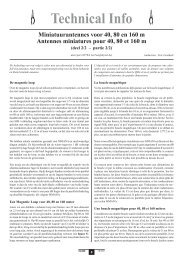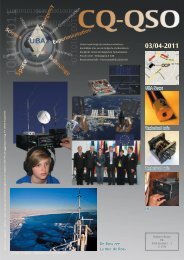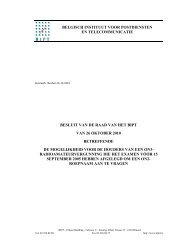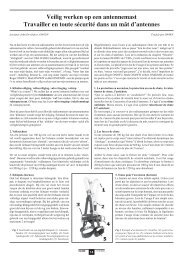IARU Region 1 VHF Managers Handbook - UBA
IARU Region 1 VHF Managers Handbook - UBA
IARU Region 1 VHF Managers Handbook - UBA
You also want an ePaper? Increase the reach of your titles
YUMPU automatically turns print PDFs into web optimized ePapers that Google loves.
6 PROPAGATION RESEARCH BY AMATEURS<br />
6.1 INTRODUCTION<br />
Amateurs have always contributed to radio science, both in the technical field, e.g. with the<br />
development of new transmitting and receiving methods, and in the field of propagation research by<br />
showing the limits of distance and the variety of propagation phenomena that can be used over an<br />
ever increasing range of frequencies.<br />
Regarding propagation, amateur contributions during the first years of radio in the 'world below 200<br />
metres' are, of course, well-known, as are, for instance, the pioneering efforts of the "amateur" Grote<br />
Reber in the field of radio-astronomy. Those were the early days, but also in more recent times<br />
amateurs have made considerable contributions in the field of scientific investigations. To mention a<br />
few examples:<br />
a) in the fifties several research institutes in Western Europe carried out tropo-scatter research in<br />
close co-operation with an extensive network of amateur observer stations;<br />
b) fundamental work was and is done by amateurs in the definition and study of the TE<br />
(Trans-Equatorial) propagation mode of <strong>VHF</strong> radio-waves;<br />
c) during the IGY (International Geophysical Year), amateurs supported various propagation<br />
research projects initiated by the Max Planck Institute in Darmstadt as well as by other scientific<br />
institutes.<br />
The important facts which enable amateurs to make valuable contributions to propagation research<br />
are:<br />
1) world-wide there are almost no regions which are not covered by amateurs. If effectively<br />
organised, amateurs constitute an extensive network of observation points that an official<br />
research institute could hardly afford to set up;<br />
2) amateurs are enthusiastic in the disciplines they pursue, are often on the bands for extended<br />
periods of time - pushing the various propagation modes to their limits! - , and, in many cases,<br />
are in possession of high-performance, individually-calibrated pieces of transmitting/receiving<br />
equipment.<br />
<strong>IARU</strong> <strong>Region</strong> I fully recognizes the importance of this type of work in the Amateur Service, and at the<br />
<strong>IARU</strong> <strong>Region</strong> 1 Conference in Warsaw (1975) the following general recommendation was adopted:<br />
Groups of amateurs shall be organised to carry out scientific observations regarding all forms of<br />
radio propagation, including<br />
1) ionospheric<br />
2) tropospheric<br />
3) space.<br />
These groups are recommended to co-operate closely with RSGB, DARC, REF and any other<br />
societies which have a proper organisation for handling scientific data and co-operating with<br />
scientific institutes.<br />
It is also recommended that the results of such observations be published in the journals of<br />
member societies and/or scientific journals.<br />
Currently, in the international field, amateurs are involved in long-term studies of tropospheric and<br />
auroral propagation modes, long range ionospheric high MUF studies and the study of the<br />
characteristics of moonbounce and meteor-scatter techniques.<br />
<strong>IARU</strong> <strong>Region</strong> 1 page 94/148 Version 5.40<br />
<strong>VHF</strong> managers handbook




